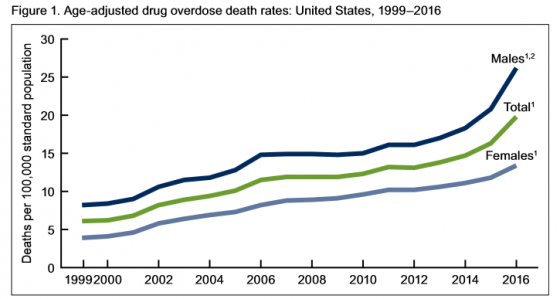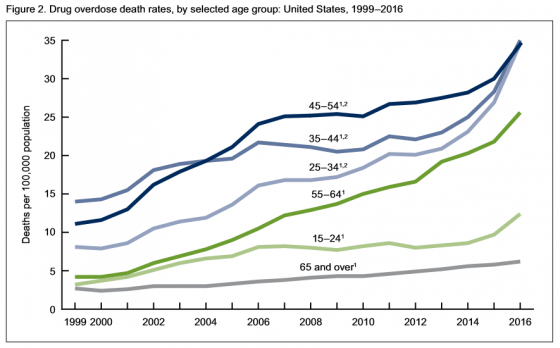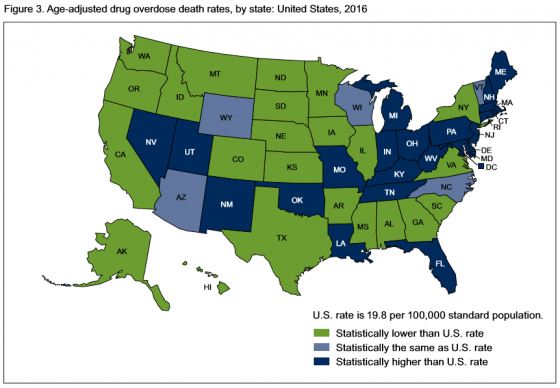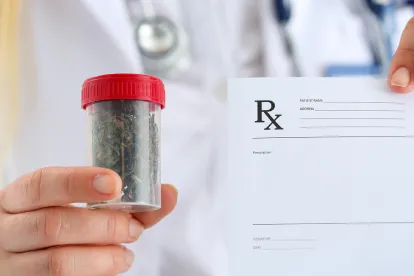Deaths from drug overdose have reached crisis proportions in the United States, with more than 63,600 deaths in 2016—more than three times that of 1999. The majority were males, whose deaths increased from 8.2 in 1999 to 26.2 in 2016; compared to females, whose rate rose from 3.9 in 1999 to 13.4 in 2016, according to the Centers for Disease Control and Prevention (CDC).

 Of people age 15 and above:
Of people age 15 and above:
- Rates of drug overdose deaths increased from 1999 to 2016 for all groups studied.
- Rates in 2016 were highest for people ages 25-35 (34.6 per 100,000), 35-44 (25.0), and 45-54 (34.5).
- From 2015 to 2016, the drug overdose death rates for adults age 45-54, 55-64, and 65 and above went up 15%, 17% and 7% respectively, the CDC said.

In 2016, 22 states and the District of Columbia had overdose death rates that were statistically higher than the national rate. States with the highest number of overdose deaths were: West Virginia, with 52 per 100,000; Ohio with 39.1; New Hampshire with 39; District of Columbia with 38.8; and Pennsylvania, which had 37.9 deaths.
States with the lowest age-adjusted drug overdose rates were: Iowa, which had 10.6 deaths; North Dakota, 10.6; Texas, 10; South Dakota, 8.4; and Nebraska, which had 6.4 deaths.





 />i
/>i

